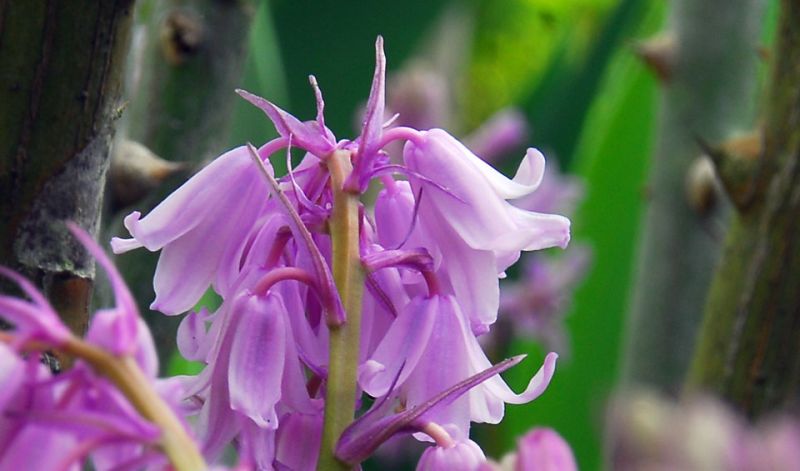Hyacinthoides hispanica / Endymion hispanicus / Scilla hispanicus
("Spanish bluebells / Scilla Campanulata ")

This fairly tall-growing scilla is also the one that's last to flower. But you can expect lots and lots of broad, bell-shaped flowers hanging from its sturdy, round flower stalks. In the wild its color is violet-blue, but there are also large-flowering pink, white and blue varieties available. Plant in nutrient-rich, sufficiently moist soil as soon as possible after acquiring.
What You Need To Know Before You Plant:
When Will This Flower Bloom?
Mid-Late Spring
When Should I Buy and Plant These Bulbs?
Fall
What Kind of Light Does This Bulb Prefer?
Full sun to partial shade
What Color Will the Flower Be?
Blue, pink, white or a mixture of all three
How Far Apart Should I Plant These Bulbs?
3 in / 8 cm
How Deep Should I Dig?
4 in / 10 cm
How Tall Will It Grow?
12-14 in / 30-35 cm
Recommended Number of Bulbs Per Square Foot?
12
Is It Deer/Critter Resistant?
Yes
How Can I Best Use It in My Landscaping?
In borders, rock gardens, perennial beds and woodland areas.
What Should I Do After Flowering?
Unless you want the plants to self-seed (which they do quite readily) remove the flowerheads after flowering. If you want them to bloom again next year the foliage must be allowed to die back on its own and will require consistent moisture while it does. (Some companion perennial plants like ferns or hostas will hide the dying foliage well). Once the clump becomes overgrown you will notice that it will produce fewer and smaller flowers and weaker and smaller leaves. Simply dig up the bulbs when the foliage has almost died down. Divide, respace and replant them right away and they are good to perform for another 3-4 years.
Other Popular Varieties
'Excelsior' (blue), 'Queen of the Pinks' (pink) and 'White City' (white). Also sold as mixed colours.
About the Family
Hyacinthoides Family
Formerly known as Scilla. The hispanica species are native to the Iberian peninsula, the non-scripta species to North-western Europe.
Read More About the Family


